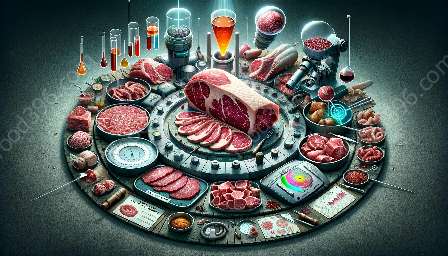Meat texture plays a vital role in its overall quality and consumer acceptance. It is a complex combination of sensory perceptions, influenced by many factors. Understanding the textural properties of meat is essential in evaluating its quality and involves a deep dive into meat science.
Factors Influencing Meat Texture
1. Muscle Structure: The arrangement and organization of muscle fibers influence the texture of meat. Muscles with finer fibers tend to produce more tender meat, while larger, coarser fibers result in tougher texture.
2. Fat Content: The distribution and amount of fat within the muscle affect the juiciness and tenderness of the meat. Marbling, the intramuscular fat, contributes to the overall texture and flavor.
3. Processing Method: The method of processing, such as grinding, cutting, or tenderizing, can impact the texture of meat. The level of mechanical manipulation the meat undergoes affects its tenderness and structure.
4. Aging: The process of meat aging can significantly alter its texture. Controlled aging allows enzymes to break down connective tissue, improving tenderness.
Meat Texture Assessment
Meat texture assessment involves various methods to evaluate its tactile and structural characteristics. These methods are crucial in determining the quality of meat and its suitability for different culinary applications. Some common techniques for assessing meat texture include:
- Shear Force Measurement
- Compression Test
- Texture Profile Analysis
- Sensory Evaluation
These methods provide quantitative and qualitative insights into the textural properties of meat, allowing for a comprehensive evaluation.
Meat Quality Evaluation
The textural properties of meat are integral to the overall quality evaluation. A comprehensive assessment of meat quality considers not only its texture but also factors such as color, flavor, and juiciness. Understanding the interplay between these characteristics is essential for ensuring consumer satisfaction and culinary success.
Impact of Meat Science
Meat science delves into the fundamental aspects of meat, including its composition, structure, and properties. It encompasses various disciplines, such as food microbiology, biochemistry, and animal genetics, to enhance our understanding of meat quality and texture. Through research and innovation, meat science continually contributes to the improvement of meat products and the development of new evaluation techniques.

